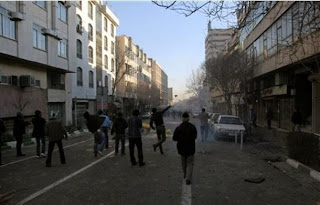Many believe it started with Barack Obama’s popularity with the young people, was fuelled by the Iranian revolution and finally erupted during the world’s economic crisis and the austerity measures that followed.
The young people of the world heard the rallying cry when the youth of America voted in the first African American President. They watched as it all unfolded on television with the internet and social media playing a major part in Obama’s success.
During the Iranian Revolution the use of internet and social media again came into play with the street protests being organized across the social media sites, but the Iranian regime’s brutality managed to suppress their will to continue.

With the economic downturn in the world, the need to reduce financial deficits and the austerity measures that were imposed upon the people of many countries, times had become hard.
And in the Middle East region the people of these countries did not want to lose the growth they had seen in recent years. They had suffered the plight of being under the control of dictator regimes for too long.
Now was the time for the people of the region to raise their voices and for them to rise up and make a stand for their freedom and democracy.
It started in Tunisia with organized protests and the use of people power to oust the incumbent President and make him flee the country.

The people of Egypt watched closely on television the events in Tunisia unfold and were inspired by the rallying cry of the youth on the internet and social media stating that the barrier of fear had been broken.

Now it was their turn to make their voices heard and many hundreds of thousands of people filled Tahrir Square in Cairo and key places across the country, even during the regime imposed curfew hours, demanding the resignation of President Mubarak and freedom for Egypt.
Soon the cry of revolt was to spread across the whole region with the people realizing that the freedom to protest and the liberty that it would bring was now within their grasp.
Street protests calling for the overthrow of the dictator regimes was now gathering pace and the people of the world, including President Obama and other world leaders would bear witness to the great Islamic uprising across the countries of the Middle East.
Algeria

Yemen

Lebanon

The dictators were being ousted from their self appointed positions of power with the people demanding new governments that would bring them liberty and democracy.
Syria

Jordan

Morocco

It will go down in history that 2011 was indeed the year of the great Islamic uprising which promoted the cause of the Muslim Brotherhood.
read more; http://newsflavor.com/world/middle-east/2011-the-year-of-the-great-islamic-uprising/





